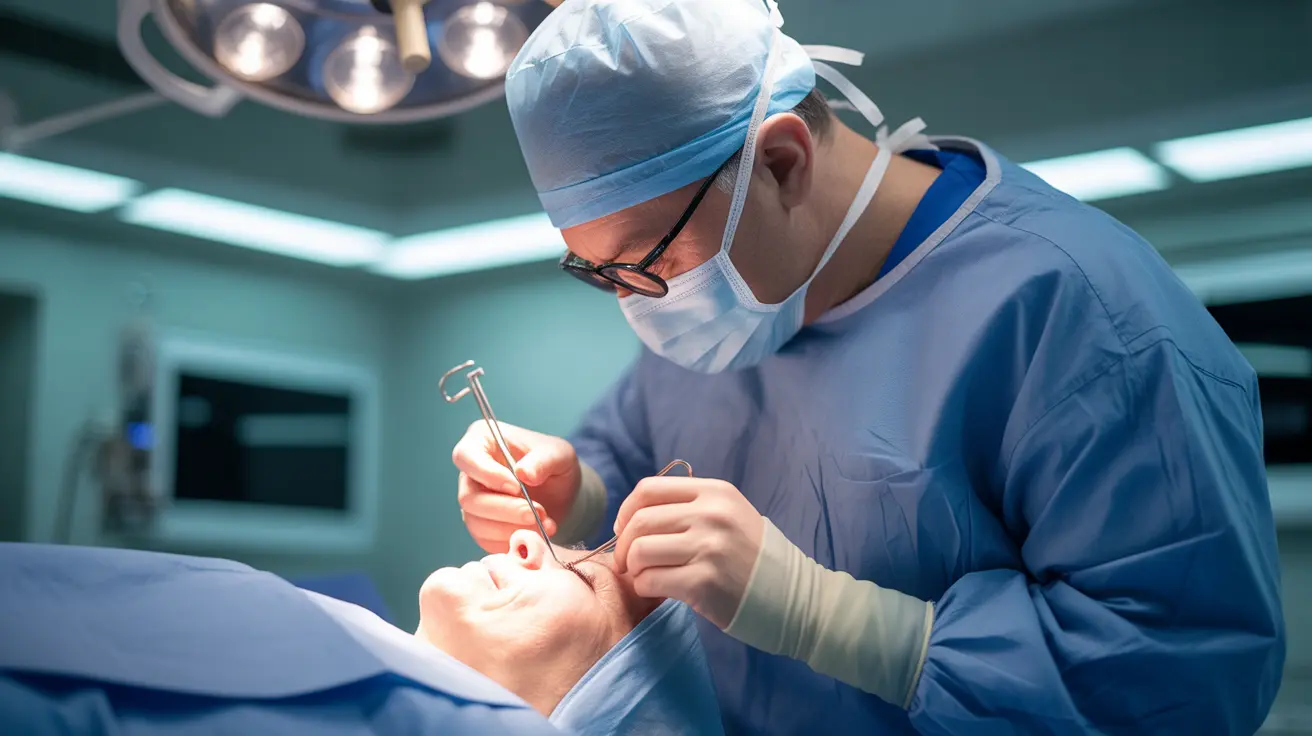Upper blepharoplasty is a surgical procedure that rejuvenates the appearance of the upper eyelids by removing excess skin, muscle, and sometimes fat. This procedure not only enhances aesthetic appearance but can also improve vision in cases where drooping eyelids interfere with sight. Understanding what to expect from this surgery is crucial for anyone considering this transformative procedure.
Whether you're exploring upper blepharoplasty for cosmetic reasons or medical necessity, this comprehensive guide will walk you through the essential aspects of the procedure, from preparation to recovery.
Understanding Upper Blepharoplasty Surgery
Upper blepharoplasty is typically performed as an outpatient procedure under local anesthesia with sedation. The surgery involves making precise incisions along the natural crease of the upper eyelid, allowing the surgeon to remove excess tissue while preserving the eye's natural contours and function.
The procedure usually takes between one to two hours, depending on the complexity of the case and whether both eyes are being treated. Surgeons use specialized techniques to ensure minimal scarring and optimal results.
Preparation and Candidacy
Ideal candidates for upper blepharoplasty typically include individuals who:
- Have excess upper eyelid skin that creates a heavy or tired appearance
- Experience vision obstruction due to drooping eyelids
- Are in good general health
- Have realistic expectations about the outcome
Several medical conditions may affect candidacy, including:
- Severe dry eye syndrome
- Uncontrolled high blood pressure
- Blood clotting disorders
- Certain autoimmune conditions
The Recovery Process
Recovery from upper blepharoplasty typically progresses through several stages:
Immediate Post-Surgery (First 24-48 Hours)
Patients can expect some swelling, bruising, and mild discomfort. Cold compresses and prescribed medications help manage these symptoms. Most people can return home the same day but need someone to drive them.
First Week
Swelling typically peaks around day three and begins to subside. Stitches are usually removed between days five and seven. Many patients feel comfortable returning to light activities within this timeframe.
Weeks 2-4
Most visible bruising resolves, though some residual swelling may persist. Patients can usually resume normal activities, including exercise, with their doctor's approval.
Managing Pain and Discomfort
Pain management during and after upper blepharoplasty involves multiple approaches:
- Local anesthesia during surgery
- Prescribed pain medication for the first few days
- Over-the-counter pain relievers as needed
- Cold compresses to reduce swelling and discomfort
- Proper eye care and lubrication
Potential Risks and Complications
While upper blepharoplasty is generally safe, potential complications may include:
- Infection
- Bleeding
- Scarring
- Dry eyes
- Temporary blurred vision
- Asymmetry
- Difficulty closing eyes completely
Working with a board-certified surgeon and following all post-operative instructions can help minimize these risks.
Frequently Asked Questions
What should I expect during and immediately after upper eyelid blepharoplasty surgery?
During surgery, you'll be under local anesthesia with sedation. The procedure typically takes 1-2 hours. Immediately after, you'll experience some swelling and mild discomfort. You'll need someone to drive you home and should plan to rest with your head elevated for the first few days.
How long does the recovery from upper eyelid blepharoplasty usually take and what are common side effects?
Full recovery typically takes 4-6 weeks. Common side effects include swelling, bruising, mild pain, and temporary dry eyes. Most patients can return to work within 7-10 days, though complete healing and final results may take several months.
Who is a good candidate for upper eyelid blepharoplasty and are there any medical conditions that disqualify someone?
Good candidates are healthy adults with excess upper eyelid skin affecting appearance or vision. Disqualifying conditions include severe dry eye syndrome, uncontrolled high blood pressure, blood clotting disorders, and certain autoimmune conditions.
What are the risks and potential complications of upper eyelid blepharoplasty?
Risks include infection, bleeding, scarring, dry eyes, temporary vision changes, and possible asymmetry. More serious but rare complications can include vision loss or difficulty closing the eyes completely.
How is pain managed during and after upper eyelid blepharoplasty surgery?
Pain is managed through local anesthesia during surgery, followed by prescribed pain medication for the first few days. Cold compresses and over-the-counter pain relievers help manage discomfort during recovery. Most patients report minimal pain overall.




